This article was co-authored by Francisco Gomez. Francisco Gomez is the Head Coach at the FIT Potato Gym, a training gym established in 2001 in the San Francisco Bay Area. Francisco is a former competitive runner who helps endurance athletes train for major marathons like the Boston Marathon. Francisco specializes in Injury Rehab, Flexibility, Marathon Training, and Senior Fitness. He has a B.S. in Nutrition and Exercise Physiology & Running.
There are 12 references cited in this article, which can be found at the bottom of the page.
This article has been viewed 66,026 times.
Writing a fitness plan can be instrumental to success, but it can be a daunting experience for the beginner, chiefly because of the wealth and diversity of available information. There is more involved than simply jotting down repetitions and weight. A fitness plan has three basic elements: cardiovascular exercise, resistance training, and flexibility training (after some kind of activity). With proper motivation, organization, and effort, you can write an accomplishable fitness plan.
Steps
Picking a Realistic Goal and Schedule
-
1Assess your fitness level. Before you can make a fitness plan, you will need to determine your current fitness level. Think about what you can do and what you cannot do physically. There are many tests and assessments you can take to find out your level, but if you are reading this, you have probably already decided to improve your fitness and now want to make a plan.[1]
- Consider your cardiovascular health. Can you go up a flight of stairs without getting out of breath? Can you walk short or long distances easily? If not, then one goal might be to improve your heart and lung function.
- Consider your strength. Can you lift 20, 30, or even 50 pounds easily? Can you do pushups? If not, then your goal might be to build strength in your upper body.
- Consider your flexibility. Can you touch your toes when you bend over, or even your knees? If not, then you might make enhancing your flexibility another one of your goals.
-
2Set measurable goals. While working out, you will want to have a way to identify how far you've come, and how far you have to go. Here are a few possibilities:
- Consider a health improvement like walking up a flight of stairs without getting winded, or you might set a goal to get the recommended 150 minutes of physical activity each week by going for a 30-minute walk on five days out of every week. Focusing on these practical goals as your starting points may help to keep you motivated.
- Take off a few inches. Imagine your ideal body shape - maybe the waist size from years ago - then do a full body measurement to see how far away you are. Make sure to record your measurements to track your progress. Before and after pictures can be very positive reinforcement.
- Pick a race distance you would like to run (e.g. 5K, 10K, Marathon) and determine how many miles you can presently run. Slowly increase the mileage along your way - some programs even permit walking - and you'll soon be on your way to the finish line.[2]
Advertisement -
3Make a plan to reach your goals. Plan when you will work out on which days, when your workout plans will reach the final goal, and what you will do to get there. Figure out how you can get 150 minutes of moderate exercise each week. If you are really pressed for time, make that 75 minutes of vigorous exercise. Weight training or resistance training is recommended twice a week and can be included in the 150 minutes of moderate exercise.[3] Here are a variety of recommendations:
- Create the perfect schedule. Finding time to work out is difficult, otherwise there wouldn’t be various programs promising major results in minimal time. Balance other obligations with your schedule.[4]
- Set an end-date for your goal. Knowing the date of the doctor visit, race, wedding, or class reunion will help the goal become realistic. If the date is four months from tomorrow, that is the window you have to build your schedule.
- Give yourself enough time. Depending on your goal and a variety of other health-related factors, success may not come quickly. It is important to balance expectation with the ability to fully commit. Ensure there is enough time - results could take a few months - to see the positive results.
- Include mini-workouts whenever you have a free moment. Schedule chair dips at work, core contractions during your commute, or milk gallon curls for breakfast.[5] [6]
Writing Your Plan
-
1Decide whether to type or hand-write your plan. Each method has advantages. Putting it on a computer, maybe a spreadsheet, allows for easy tracking. Hand-written plans, however, can be carried around the gym. If you are likely to forget your plan, having something handy might be best.[7]
-
2Create your workout schedule. A workout schedule needs multiple components to be functional. Training frequency varies, but most fitness plans call for 3-5 days per week of training - some say to workout every day.[8] Other factors follow:
- Choose your workouts. Weight training, high intensity interval training (HIIT), running, spin classes, group fitness, the options are limitless.
- Follow the standard advice and factor in off-days. Muscles need time to rest and regenerate, so make sure that you take time off from strength training. Most people can safely do cardio 5 to 6 days a week, but check with your doctor to confirm that this is okay in your situation.
- Balance your resistance or weight training workout by alternating muscle groups. Record or keep track of the amount of weight, duration, and repetitions. Depending on your focus - strength gain, weight loss, muscle increase, endurance - the weight/repetition balance changes.[9] [10]
- Cardio workouts, such as walking, running, cycling or doing a cardio machine at the gym, can be measured by distance and time. Be sure to keep a record. You can also see improvements when you record your starting and finishing heart rate. With practice, your heart won't have to work as hard to do the same workout so your heart rate will slow down as you become more fit.
-
3Choose your location(s). Fill in where you plan on working out each day to help clarify how you will carry out your plan. If it's a treadmill run or a spin class, then commit to making the trip to the gym for your workout. If you are planning to do a bodyweight strength training workout, then you may be able to just do it at home. Make sure to specify where each workout will take place.
-
4Determine your diet. Different types of people need diets that set them up for success; opt for one that fits your personality. Some people do not even need to adjust what they are eating.
- Find your macro/micro balance. Eating a great variety of foods will cover most needs, but one general guideline is to consume more carbohydrates than protein or fat.
- Limit sodium, sugars, and saturated fats. Not all calories are equal. Try to select foods that satiate hunger longer.[11]
- Take a diet quiz.[12] Use the results of the quiz to plan out weekly meals. Fit those meals into the various meal breaks of your schedule.
Sticking to Your Plan
-
1Adjust your goals if necessary. Maybe you overestimated your fitness level, or bit off a goal larger than you can chew, that's fine. Update your plan as you go along and modify your goals as necessary. A few possible adjustments are:
- Lower the weights you had planned on lifting, or the inches you had hoped to lose.
- Drop the race distance down a notch. If you had your heart set on a marathon, set your sights on a half-marathon instead. Don't scratch the entire idea, just adjust it.
- Add days to your timeline. If you don't want to diminish the intended goal, perhaps the schedule just needs a buffer? Figure the extra time required to reach your goal and just supplement the fitness plan accordingly.
-
2Celebrate success. Positive reinforcement will go a long way towards keep you on track. Try to reward yourself as much as possible without sacrificing the goal itself. Here are a few great ways to celebrate:
- Post your successes online and get ready for the kudos.
- Buy an outfit you couldn't fit into previously.
- Reward sore muscles with a massage.
- Indulge in a favorite food or dessert for your "cheat meal".
-
3Find an accountability partner. Get someone on board with your same program, a shared motivation. It will be much easier to put a check-mark on a day of your fitness plan than crossing out a day of inactivity.
Expert Q&A
Did you know you can get expert answers for this article?
Unlock expert answers by supporting wikiHow
-
QuestionWhat should be included in a fitness plan?
 Francisco GomezFrancisco Gomez is the Head Coach at the FIT Potato Gym, a training gym established in 2001 in the San Francisco Bay Area. Francisco is a former competitive runner who helps endurance athletes train for major marathons like the Boston Marathon. Francisco specializes in Injury Rehab, Flexibility, Marathon Training, and Senior Fitness. He has a B.S. in Nutrition and Exercise Physiology & Running.
Francisco GomezFrancisco Gomez is the Head Coach at the FIT Potato Gym, a training gym established in 2001 in the San Francisco Bay Area. Francisco is a former competitive runner who helps endurance athletes train for major marathons like the Boston Marathon. Francisco specializes in Injury Rehab, Flexibility, Marathon Training, and Senior Fitness. He has a B.S. in Nutrition and Exercise Physiology & Running.
Fitness Coach
-
QuestionWhy do I never stick to my fitness plan?
 Francisco GomezFrancisco Gomez is the Head Coach at the FIT Potato Gym, a training gym established in 2001 in the San Francisco Bay Area. Francisco is a former competitive runner who helps endurance athletes train for major marathons like the Boston Marathon. Francisco specializes in Injury Rehab, Flexibility, Marathon Training, and Senior Fitness. He has a B.S. in Nutrition and Exercise Physiology & Running.
Francisco GomezFrancisco Gomez is the Head Coach at the FIT Potato Gym, a training gym established in 2001 in the San Francisco Bay Area. Francisco is a former competitive runner who helps endurance athletes train for major marathons like the Boston Marathon. Francisco specializes in Injury Rehab, Flexibility, Marathon Training, and Senior Fitness. He has a B.S. in Nutrition and Exercise Physiology & Running.
Fitness Coach It's hard to stick with it! The main thing is that you really want to take stock of how much time you have. If you're super busy, you need to figure out how much time you can actually dedicate to working out so you can set a reasonable goal. The other thing is, you should actually print or write out your fitness plan and then post it somewhere where you'll see it all the time. This way, it will kind of stick out in your mind and you'll have a much easier time remembering to work out.
It's hard to stick with it! The main thing is that you really want to take stock of how much time you have. If you're super busy, you need to figure out how much time you can actually dedicate to working out so you can set a reasonable goal. The other thing is, you should actually print or write out your fitness plan and then post it somewhere where you'll see it all the time. This way, it will kind of stick out in your mind and you'll have a much easier time remembering to work out. -
QuestionHow should I start out if I haven't exercised in years?
 Francisco GomezFrancisco Gomez is the Head Coach at the FIT Potato Gym, a training gym established in 2001 in the San Francisco Bay Area. Francisco is a former competitive runner who helps endurance athletes train for major marathons like the Boston Marathon. Francisco specializes in Injury Rehab, Flexibility, Marathon Training, and Senior Fitness. He has a B.S. in Nutrition and Exercise Physiology & Running.
Francisco GomezFrancisco Gomez is the Head Coach at the FIT Potato Gym, a training gym established in 2001 in the San Francisco Bay Area. Francisco is a former competitive runner who helps endurance athletes train for major marathons like the Boston Marathon. Francisco specializes in Injury Rehab, Flexibility, Marathon Training, and Senior Fitness. He has a B.S. in Nutrition and Exercise Physiology & Running.
Fitness Coach
Warnings
- Do not sacrifice form for weight. Lifting more than what you are capable of can lead to injury.⧼thumbs_response⧽
- Listen to your body. If your body feels lethargic or pained, you may need to slow down or put down the weights. Don’t injure yourself.⧼thumbs_response⧽
- If you are not used to regular exercise, have heart/lung disease symptoms, or have an extenuating circumstance (e.g. pregnancy, recent injury, obesity), be sure to consult a physician before starting. Vitals like blood pressure, heart rate, and temperature are just the beginning to an evaluation which could dictate your future exercise ability.[13] [14]⧼thumbs_response⧽
References
- ↑ Francisco Gomez. Fitness Coach. Expert Interview. 24 October 2019.
- ↑ http://www.jeffgalloway.com/training/run-walk/
- ↑ Francisco Gomez. Fitness Coach. Expert Interview. 24 October 2019.
- ↑ https://www.beachbody.com/product/fitness_programs/focus-t25-workout.do
- ↑ https://hitchfit.com/workout-plans/office-workouts/
- ↑ https://www.everydayhealth.com/fitness/everyday-ways-to-flatten-your-abs.aspx
- ↑ Francisco Gomez. Fitness Coach. Expert Interview. 24 October 2019.
- ↑ https://www.bodybuilding.com/content/rest-and-overtraining-what-does-this-mean-to-bodybuilders.html
- ↑ https://www.womenshealthmag.com/fitness/a19942623/how-much-weight-should-i-lift/
- ↑ https://www.bodybuilding.com/content/size-vs-strength-are-you-lifting-too-heavy.html
- ↑ https://www.webmd.com/diet/obesity/features/foods-that-curb-hunger#1
- ↑ http://www.weightlossjoy.com/the-diet-quiz/
- ↑ https://www.runnersworld.com/beginner/a20805773/talk-to-your-doctor-before-exercising/
- ↑ https://www.mayoclinic.org/healthy-lifestyle/fitness/in-depth/exercise/art-20047414



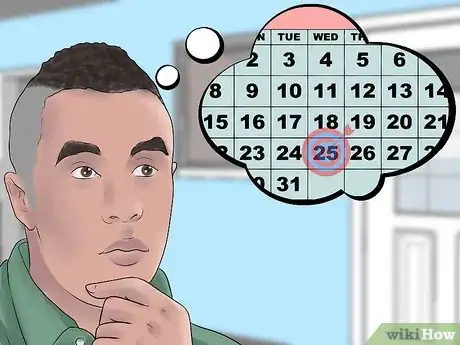

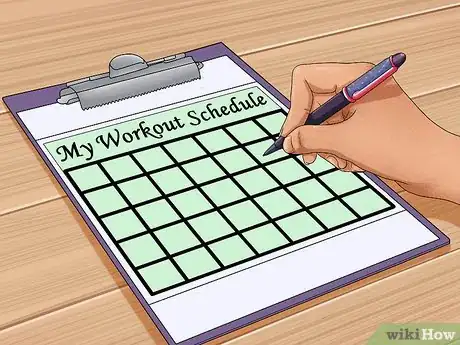






-Step-24-Version-5.webp)




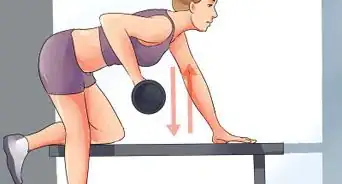
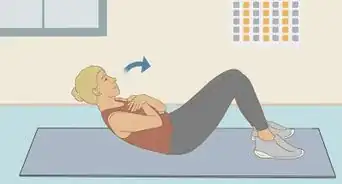









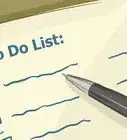
-Step-24-Version-5.webp)




































